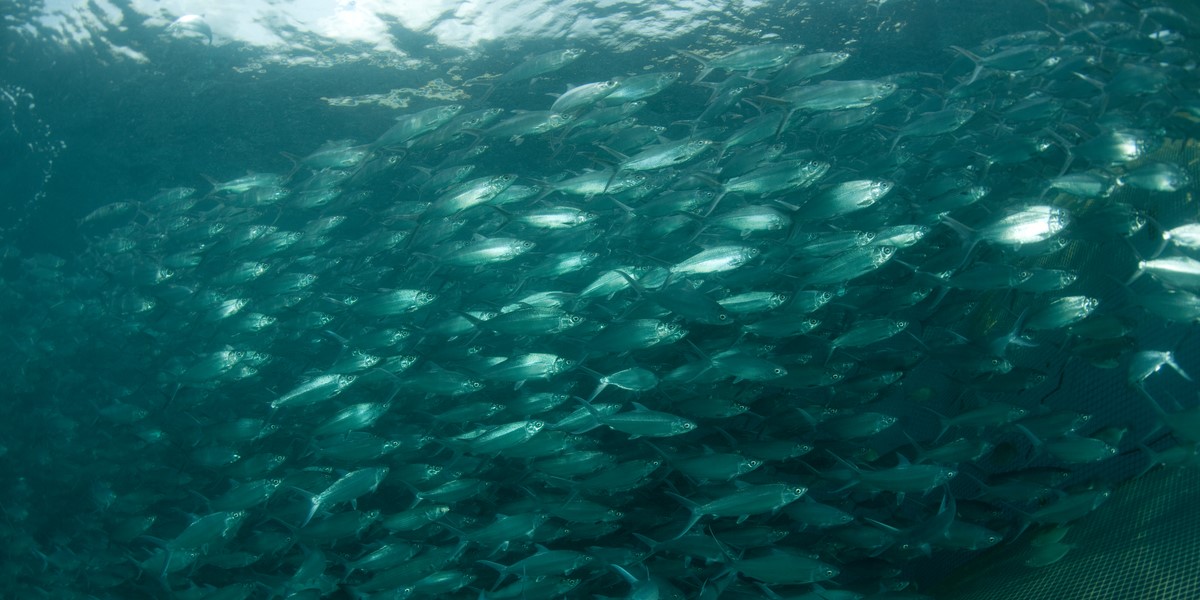SECOND POND SCHOOL MEETING: MANAGEMENT OF LOWITA MINAPOLITAN AREA, KEC. SUPPA
By Idham Malik (Seafood Saver Officer, WWF-Indonesia)
After starting on August 19, the second meeting of Pond School of Lowita Minapolitan Area (lotangsalo, Wiringtasi, Tasiwali'e), Suppa sub-district, Pinrang district was held on Wednesday, October 28, 2015. The program built by WWF-Indonesia aquaculture program was attended by 33 participants, consisting of farmers of Tasiwali'e, Wiringtasi', and Lotangsalo villages, as well as fisheries extension workers of Suppa sub-district. The second meeting invited Prof. Hattah Fattah to present the material "Management of the Lowita Minapolitan Area, Suppa District", to unite the vision of farmers to jointly manage the area properly and responsibly.
Minapolitan is the concept of spatial planning of fishing villages as food service centers for cities. Thus there is interdependence between cities and villages, cities distribute welfare to villages, villages supply fishery food needs to cities.
Pinrang local government has initiated the formation of Pinrang District Minapolitan Coordinating Body to support the realization of good coordination between the parties in one area, namely farmers (shrimp, milkfish, seaweed), hatcheries, export companies, government agencies, and banks.
The main advantage of the Lowita minapolitan area of Pinrang Regency is the availability of natural feed Phronima suppa, which is proven to increase the quantity and quality of tiger shrimp. So far, Phronima suppa has been developed with the phronima culture method as well as adjusting the amount of stocking density in one pond plot based on the amount of phronima content. Other specific potentials that need to be developed are marine worms for broodstock feed, the development of artificial feed, and the potential for local broodstock.
Another potential that is developing is the seaweed commodity with an area of 181.5 Ha in Pare Bay. The presence of seaweed can also improve water quality, by filtering seawater that enters the community ponds.
A number of key strategies are currently in place for the development of aquaculture areas:
- Irrigation facilities for water quality improvement. The government has provided support in the form of excavators for the improvement of irrigation channels.
- Availability of cheap and quality fingerlings by encouraging hatchery to improve fingerlings quality by considering research results on phronima as an alternative fingerlings feed.
- Availability of cheap and good feed and medicine. Currently, farmers of Samaturu'e Group, Wiringtasi Village, assisted by researchers from the Maros Research Institute for Brackish Water Aquaculture (BPPBAP) have developed RICA (Research Institute for Coastal Aquaculture) probiotic culture.
- The implementation of good and responsible aquaculture management by involving WWF-ID for environmentally friendly aquaculture assistance based on the Aquaculture Stewardship Council (ASC) standard.
- Government assistance and support. Early next year, the Pinrang local government will implement a co-learning Field School on a demonstration plot of shrimp farming with Phronima natural feed.
Another strategy being developed by the Pinrang local government is the socialization of Suppa Beach Tourism to support the increase in the potential of the area.
Cooperation between parties, which in this case the government, private sector, academics, and the local community finally bear fruit. Lowita Minapolitan, Suppa Sub-district entered the top three in the management of minapolitan areas nationally, from around 60 other minapolitan areas in Indonesia. Lowita Minapolitan is generally considered quite good from the aspect of facilities and infrastructure and technical aspects.





